Fire plays an important role in the health of Sierra Nevada forests. The Me-Wuk and other indigenous tribes of the region often burned intentionally to maintain open understory conditions. But starting nearly a century ago, the Forest Service established a 10 a.m. policy. This policy pushed the land managers to suppress every wildfire by 10 a.m. the day following the initial report, even when fires burned gently along the forest floor removing years of accumulated fallen trees, pine needles, branches, and thickets of brush.
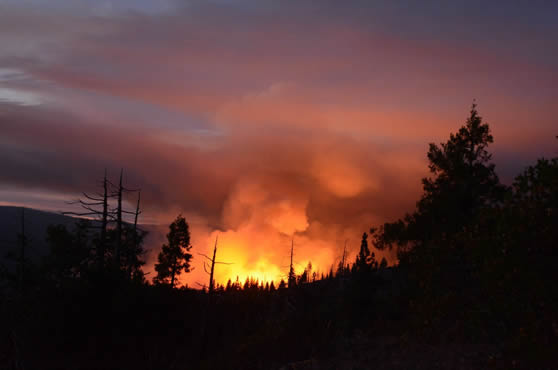
Over the past 20 years, scientists have significantly increased their knowledge of fire ecology. They have endorsed policies aimed at returning forests to the historic conditions – with scattered individual trees, small openings, and small patches of trees creating a mosaic of tree cover. Under those historic, natural conditions, when wildfires burned during the hot summer and early fall seasons, they primarily burned at low or moderate-intensity due to low fuel loads across the landscape.
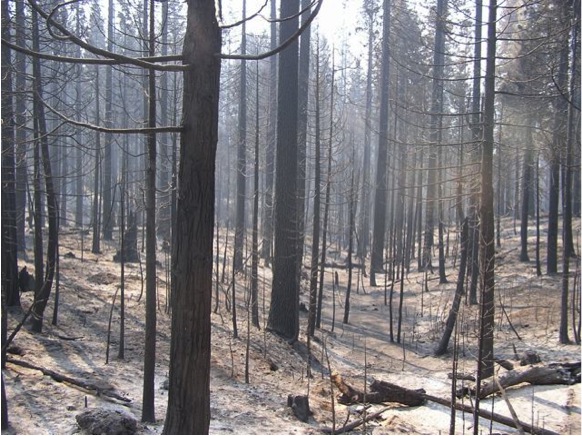
The 2013 Rim Fire
The 2013 Rim Fire burned 400 square miles – much of it at high severity. Across a vast core area of the Tuolumne River canyon and the slopes that lead up towards Cherry Lake and towards Femmons Meadow, tens of thousands of acres were incinerated with few conifer trees surviving.
Some areas were totally scorched, with not even a bush surviving unscathed, leaving literally nothing but black skeletons of trees.
Post-fire Management
CSERC staff recognizes that there are competing perspectives – even within the environmental community – as to how to respond to large areas where most trees have been killed and few young trees survived. Some have advocated for totally keeping a “hands-off” approach and letting such areas take up to a century or longer to become forests again. Others advocate for aggressively planting dense tree plantations of young conifer seedlings and using multiple treatments of herbicide spraying to kill back the brush and other competing plants that would otherwise outcompete the seedlings. CSERC promotes a middle-ground strategy. Our staff has walked thousands of acres of the Rim Fire and other burn areas. We know that without reforestation, many areas will not provide forest habitat for spotted owls, fishers, martens, and pileated woodpeckers for decades - perhaps a human lifetime or longer. Some intervention is needed if we want trees to regrow in large, high-severity burn sites.
For black-backed woodpeckers and wildlife species that thrive in burned forest, managers have carefully left extensive areas of snag forest habitat untouched. Just within the Rim Fire, there more than 300 square miles of burned area had no plans for reforestation with conifer seedlings. Roughly 25,000 acres of the 267,000 overall acres in the Rim Fire were all that was approved for reforestation by the Forest Service. Even that percentage of the overall fire footprint is unlikely to be reforested because the agency has so little funding. As of 2021, less than 7,000 acres have been reforested.
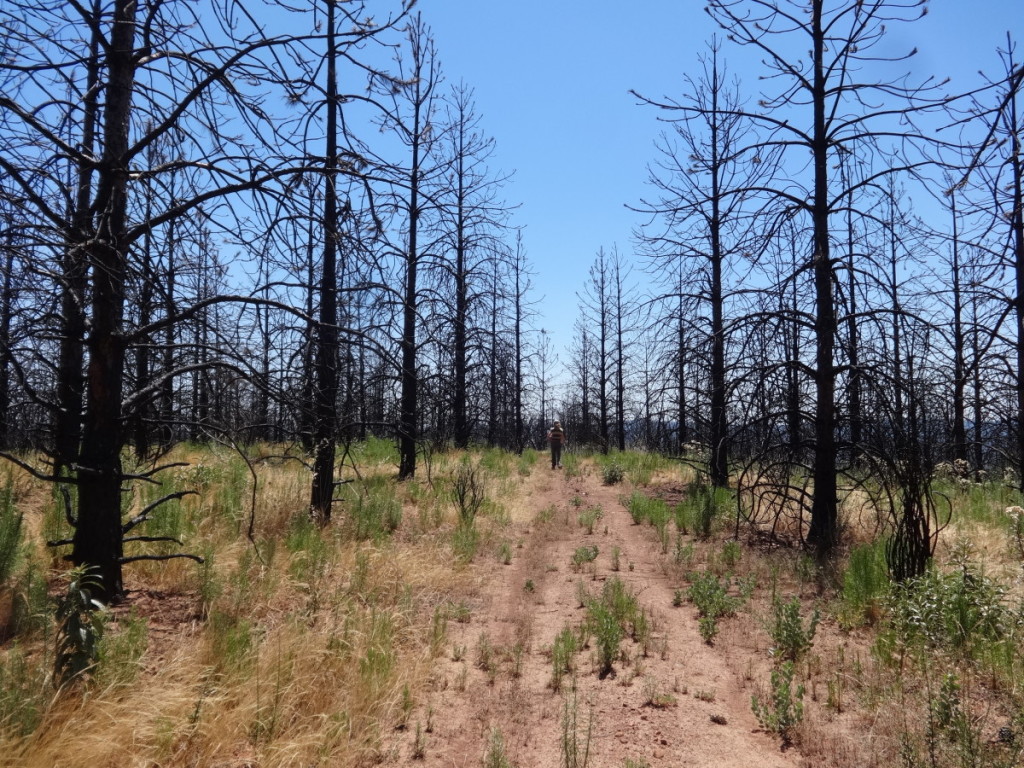
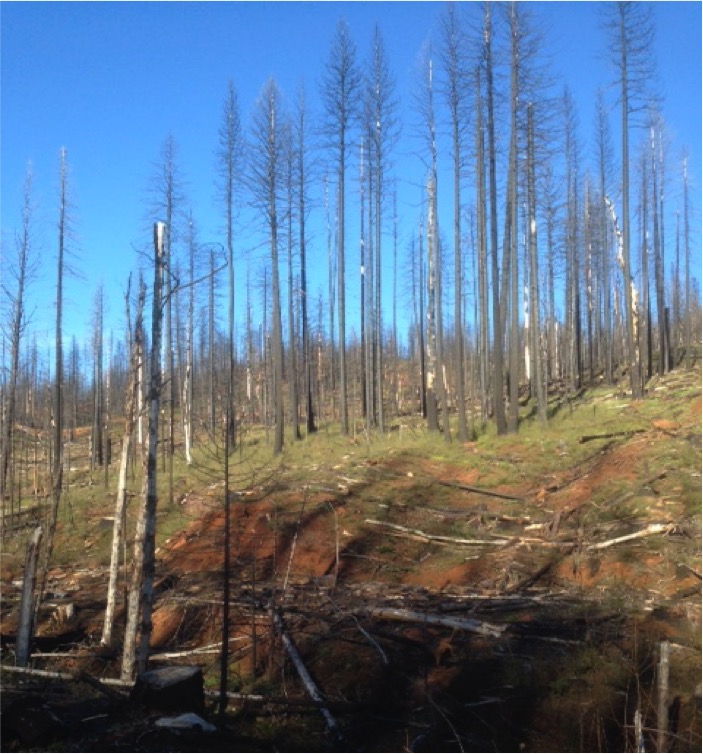
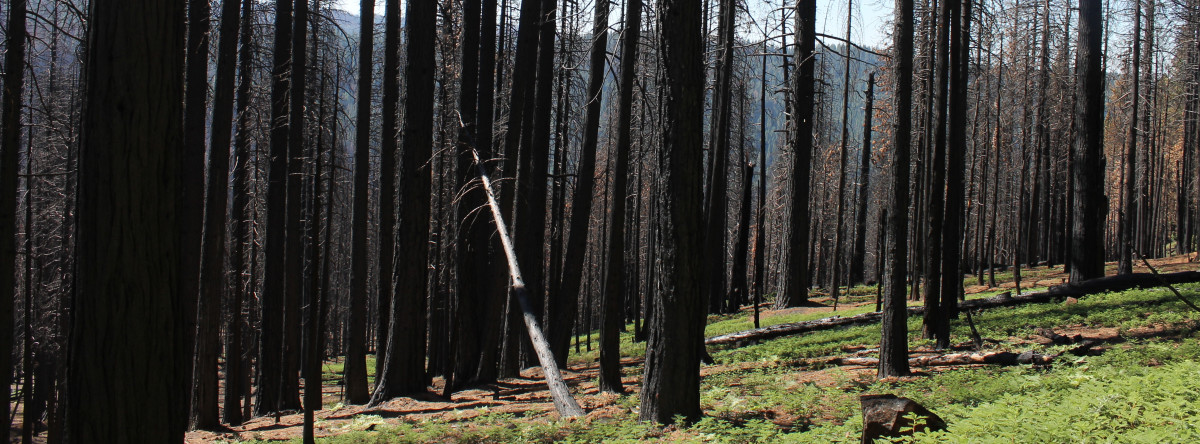
In all of the local region’s high-severity burn areas, CSERC aims to increase the long-term health of the burned ecosystem, including advocating for frequent low-intensity prescribed burning to keep fuel levels low and to make the forest areas more likely to survive future severer wildfires. CSERC also advocates for science-based thinning logging treatments combined with prescribed burning to be done in selected areas of green, unburned forests to attempt to mimic the historic natural conditions of open, park-like scattered trees with clumps and openings.
When it comes to choosing where to apply different management strategies across vast high-severity burn areas, there often need to be trade-offs that consider fuel loading as well as ecological processes, soil health, risks of invasive noxious weeds, and the political realities of limited agency budgets and a limited agency workforce. Given that the widespread, diverse, and scenic forest areas that burned in the Rim Fire may not return to a forested condition again for decades, if ever, CSERC prioritizes reforesting the areas with the most productive soils, and areas that will provide wildlife connectivity across the slowly recovering burn area.
You can read more about Stanislaus Forest issues here.

